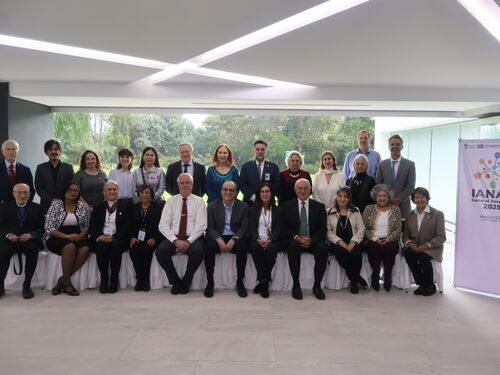Planting the Seeds for Natural Habitat and Ecosystem Restoration
Feature Story
By Megan Lowry
Last update November, 12 2020
In the wake of this year’s record-breaking wildfire and hurricane season, efforts are ramping up to rebuild communities and natural ecosystems in places devastated by fire and storms. Restoring natural ecosystems requires replacing the trees, grasses, flowers, herbs, shrubs, and other plants that have evolved and occur naturally in a particular region. However, across the U.S., millions of acres of land have been so disturbed by human activities or severe climate events that native plant populations have been lost. As a result, native seeds used to restore local plant life are in high demand.
An interim report released this month by the National Academies of Sciences, Engineering, and Medicine identifies the uses, buyers, and suppliers of native seeds, and presents a framework for the next phase of the authoring committee’s task: to recommend how to fortify our capacity to meet native seed demand. (The final report will be issued in fall 2021.)
Susan Harrison, distinguished professor in the department of environmental science and policy of the University of California, Davis, serves as chair of the committee. Harrison answered questions about the interim report and what we can expect from the next phase of the committee’s work.
Q: How are native seeds used?
Generally, we consider plants that are native to North America as those that were growing on the continent prior to European settlement. These plants evolved alongside native animal species and are the heart of native ecosystems, maintaining their resilience by stabilizing soil, retaining water, and cycling nutrients.People use native seeds to support new native plant growth in areas where we need the benefits they provide. Native seeds can be used to achieve a narrow goal, like creating a habitat corridor to assist the migration of a single species like the monarch butterfly, or much broader goals, like assisting in the recovery of an entire ecosystem in a large landscape burned by wildfire.
Q: Why is it important that we learn more about the native seed system?
Human activities in urban, rural, and wild areas have taken their toll on the ability of plant communities and ecosystems to function in ways that ultimately help human communities to thrive. Building the native seed market we need will take time. It is no small feat to create a diverse and healthy supply of seed that is flexible enough to meet all needs.
Q: What did you learn in the first phase of your study? What surprised you the most?
We learned that there is a very wide variety of people and organizations using native seeds for many different purposes. By far the biggest volume of seed is used by public land management agencies in restoration projects after wildfires. Other agencies need smaller amounts of seed for projects like establishing plants along the sides of newly built highways, or in urban areas to manage storm water runoff. Private landowners want seed to grow native plants to prevent soil erosion or to provide livestock forage. There are public-private partnerships using seeds to create wildlife habitat and restore areas overcome with invasive, nonnative plant species. And, gardeners increasingly want native seeds for their pollinator gardens and yards.
On the supply side, we learned that commercial entities selling native seed can be very specialized compared to the large companies that supply seed for grass or food crops. For one thing, starter amounts of native plant seed must be collected directly from wild-growing plants without compromising them. Other parts of the industry provide seed cleaning services or grow native plants in cultivated fields to produce even more seed. In addition, there are testing labs to determine the purity and viability of seed offered for sale, scientists who evaluate the suitability of seed for use in different locations or “seed zones,” and plant breeders who create cultivars by crossing seeds from the same species collected from different geographic locations.
Q: Did you identify any significant problems with today’s native seed supply chain?
Typically, it takes several years from the time native seeds are collected in the wild, grown in a field to harvest more seed, and made available in sufficient quantity for buyers. Therefore, emergency requests for a particular native seed species to use after a wildfire are the hardest to fill. Suppliers try to anticipate what land management agencies will want to purchase every year, but there are no guarantees. Yet, the lack of diverse supply of native seed stored in warehouses and ready for use appears to force agencies to sometimes buy seed that is ill-suited for where it will be planted, such as native cultivars, whose mixed genetic background makes them easy to grow in a cultivated field, but which may not perform well in nature.
Q: Can you summarize the findings in the committee’s interim report?
We make several preliminary observations about the factors that affect how well the native seed supply works in terms of whether users of native plant seed can find and get what they want from suppliers, and how much risk suppliers are able to bear in a market that has booms and busts. We also outline next steps for collecting the information we’ll need for the final report.
Q: Looking ahead to the next phase of your work, what is on your mind as chair? Where will your committee start, and what are your priorities?
Our focus has been on the Western U.S. thus far, and we are trying to understand what is happening in other parts of the country, where the native seed industry is not as developed. Right now, we are working on developing a questionnaire that we hope will generate the data and information we need to make recommendations in our final report.
- Join the committee for a webinar on Friday, Nov. 13, to discuss the findings of its interim report.
- Interim report
- Project page



